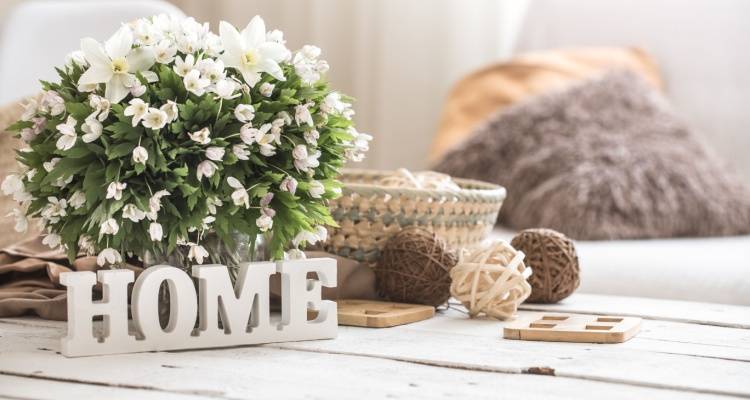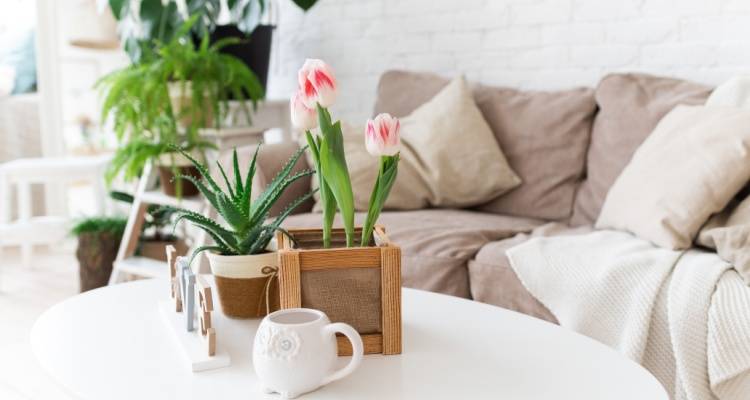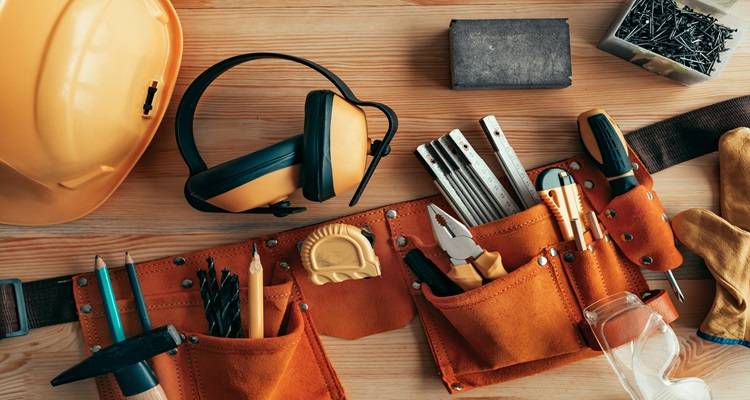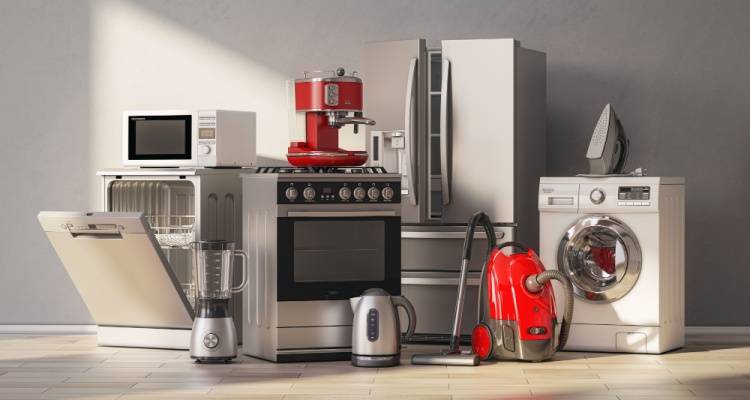Beginner’s Guide to Hydroponics
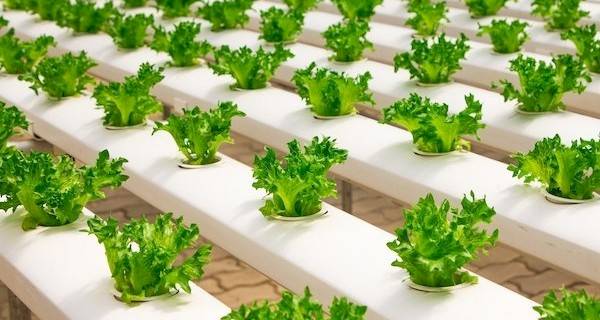
Would you like to grow plants without the need for soil and to gain from the benefits of hydroponic gardening?
In the following article, we'll explain what hydroponics is, how it works, its advantages, the types of hydroponic systems, what plants can be grown with such systems and how much it might cost.
Our guide will prove very useful whether you're planning to have a hydroponic system in the future or would like to simply expand your knowledge of the subject. By the time you've read this article, you'll be equipped with the information needed to plan out your very own hydroponics system. Thankfully hydroponics in the U.K. is suitable for year-round growing!
Contents
- What Is Hydroponics?
- How Does Hydroponics Work?
- Benefits of Hydroponics
- Types of Hydroponic Systems
- Types of Plants to Grow With Hydroponic Systems
- How Much Will It Cost To Start Hydroponic Farming?
- Conclusion
What Is Hydroponics?
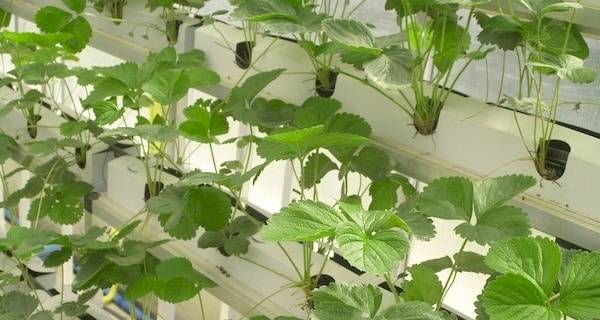
Let's first take a look at the hydroponics definition. This soilless method of growing plants, especially crops, has gained traction in recent years. Hydroponics is a form of horticulture and also a subcategory of hydroculture. Instead of using soil, an aqueous solvent is employed to provide nutrients to the plants. Hydroponics as we know it dates back to about the 1930s although the practice has become more popular in the 21st century. An interest in the employment of nutriculture emerged in the mid-1920s as the use of greenhouses became more widespread. More experimentation and the development of hydroponics took place during the thirties. Anyone with suitable space, resources, time and money for a hydroponics system can set one up and thankfully there is a wide range of hydroponic designs to choose from. If you wish to grow plants stronger and faster, use water more efficiently, enjoy more eco-friendly crop production or/and launch a soilless garden for off-grid living, then you should strongly consider launching your own hydroponic garden.
How Does Hydroponics Work?
Let's now take a look at exactly how these systems function. Sometimes housed in a greenhouse and in other cases, simply in a small container, plants are suspended in, drenched or misted with an aqua-based nutrient solution. This is to provide the plants with what they need in order to grow. As a result of the nature of hydroponics, the energy that the roots would've used up obtaining water and food are instead focused on the growth and maturation of the plants. Since these plants require a smaller root system due to the fact that they are not reliant on soil means that plants can grow in a hydroponic environment much more easily. With various methods of hydroponics, the exact details of how this is all achieved can vary.
Benefits of Hydroponics
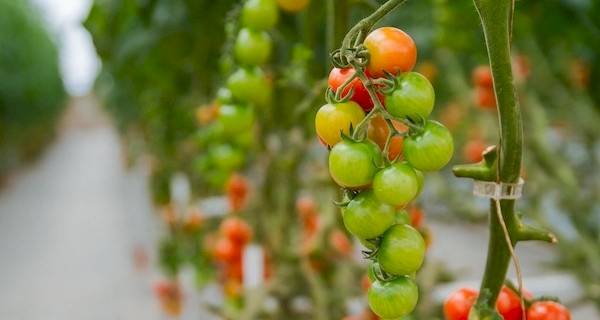
Before discussing the different systems of hydroponics, let's break down the many advantages of general hydroponics in more detail.
Year-Round Growing
Unlike with soil-based plant production, hydroponics does not have a specific growing season. While some plants can grow in the soil at any time of the year, in most cases, outdoor plants grow in the U.K. between early spring and late autumn with the winter being a period of minimal growth. An appropriate indoor space once maintained and with conditions that are kept right, will allow you to grow crops for twelve months of the year.
Higher Plant Yield
With all else being equal, hydroponic systems tend to yield a higher production of plants than would be the case with soil. In fact, with good conditions, if plants are produced hydroponically, they are often three to 10 times more numerous than they would be if grown in soil.
Better Growth Rate Results
Once the conditions are correct, plants in a hydroponic system will grow between 30% and 50% faster than their soil-based counterparts. This is in part to do with higher levels of oxygen in the growing medium as well as the plants needing shorter roots.
Water-Saving
You may be surprised to know that despite hydroponics being a water-heavy practice, overall, less water is used to grow plants this way than if soil is used. This is because the water featured in a hydroponic system can be recirculated and used again and again while with soil, the water is absorbed and used once only. On average, a hydroponic system uses 70% to 90% less water than soil.
Cheaper
Using hydroponics can be cheaper because it is less costly to set up such a system and to operate one. This is largely because of soil-related costs such as if soil would need substantial amendment and maintenance. Only in cases where someone already has access to particularly fertile soil might it be more costly to switch to hydroponics.
No Large Garden Needed
With a higher crop yield, you can grow more in a smaller space using hydroponics. Setting up a hydroponic system can be done in a large greenhouse or just a small room with appropriate lighting. Of course, no garden or outdoor space is even required with hydroponics.
No Soil Needed
It goes without saying that you won't need any soil to grow plants in a hydroponic system. This can make things easier and save you money as well as providing various other benefits. Beyond that, it offers you the opportunity to grow plants where you don't have access to sufficient soil, whether in quality or scale to grow plants. Hydroponics is ideal for living off-grid.
Climate Control
With an indoor space, you can accurately control the climate. This way, your plants will not depend on the weather and with good ventilation, you can control the temperature and humidity levels of the growing area to achieve optimal results. This can be realised, in part by avoiding hot or humid patches in the plant's environment.
Effective Use of Nutrients
By establishing the ideal conditions and taking the right steps, plants can use up their available nutrients very effectively. This can make for a healthier, more productive growing area as well as save you time, money and resources.
No Weeds
Without soil, you can expect very little, if any weed growth. With the correct preventative steps, it should be possible to avoid the growth of weeds entirely.
Fewer Pests and Diseases
In most cases, hydroponic systems are self-contained, meaning that they're far less susceptible to pest and disease-related problems. For the former, this comprises insect, bacterial and fungal pests alike. Since you also have more control over the conditions of the growing area with a hydroponic garden, the chances of an infestation or the spread of disease can be reduced further.
Time-Saving
Setting up a hydroponics system will take a bit of work but once this is done, you'll save plenty of time in the long run. That's because, if managed well, plants grown hydroponically will mature much faster and with the danger of pests and disease being lower, there's less of a risk that you'll need to spend time dealing with these kinds of issues. Additionally, since hydroponics systems tend to use up less space and because the plants are housed in a controlled environment, maintaining your hydroponically grown plants will also prove less time-consuming.
Relaxing Hobby
Beyond that, hydroponics can be a very enjoyable and soothing hobby. Once you've got the hang of it, managing and growing plants with a hydroponics garden can prove a largely stress-free and fruitful experience.
Types of Hydroponic Systems
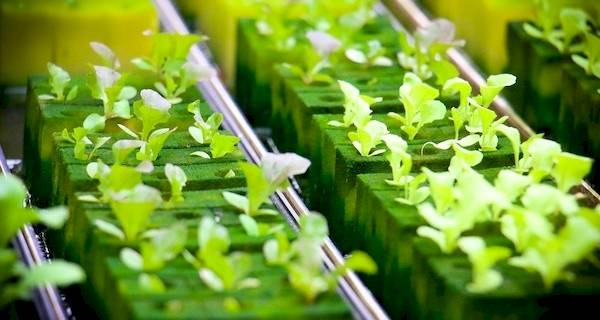
As promised, we'll now discuss the various hydroponic systems. Each has its own advantages and disadvantages. For the following subsections, we'll look at what these systems are, what tools and equipment are needed as well as mentioning which of these systems are perfect for beginners.
Easiest for Beginners: Deep Water Culture
One of the most straightforward forms of hydroponics is deep water culture (D.T.C.). This system involves a platform being used to hold the plants in place which floats atop the nutrient solution. The platform tends to be made of Styrofoam. A non-submersible air pump is used to provide air to the air stone via an airline, which in turn bubbles the solution while providing the plant roots with oxygen. A watertight container of some kind is needed to house the plants, nutrient solution, platform, airline and airstone. While it is an easy system, it is only suitable for small and light plants such as lettuce. It is also not suitable for long-lasting plants. A deep water culture system is a great way of practising and improving your hydroponic skills before moving on to something a little more challenging.
Steps:
- Fill up the reservoir half way with the nutrient solution.
- Ensure the platform remains in position.
- Ensure the air pump is functioning right.
- Continue to top up the nutrient solution when needed.
Wick
Another good option for beginners is that of a wick system. As with D.T.C., this system involves no moving parts. The growth tray of this system which also contains the nutrient solution sits atop a water-filled container. Wicks connect the growth tray to the water reservoir below and an airstone sits at the bottom of the container which in turn is hooked up to an external air pump. There are plenty of options when it comes to choosing the right growing medium for a wick hydroponics system whether it be pro-mix, coconut fibre, vermiculite or perlite. Large plants or those which require large quantities of water may not be suitable for a wick system since there is a risk that they'll consume the nutrient solution at a faster rate than the wicks can provide it. While this system has similar drawbacks to a D.T.C., it is a great way for beginners to hone their skills in hydroponics.
Steps:
- Fill up the reservoir half way with the nutrient solution.
- Ensure the air pump is working correctly.
- Ensure the wicks remain in place and continue to function.
- Refill the nutrient solution when required.
Nutrient Film Technique
This system is what most people imagine when they think of hydroponics. Nutrient film technique (N.F.T.) systems utilise a continuous flow of nutrient solution and as a result, its submersible pump does not require any timer. The growth tray or tube is positioned above the reservoir with the nutrient pump carrying the nutrient solution from the bottom of the reservoir to the growth tray. Once more, an exterior air pump connects to an airstone that sits at the bed of the water container. The growth tray, which is tilted slightly to allow excess nutrients to slide in one direction (much like how a guttering system is angled to let water flow from one end of a house to another), contains a gap at the lowest end of the tray so that the nutrient solution can return to the reservoir for reuse. Most of the time, the plants are supported in a small plastic basket and the roots simply dangle in the nutrient solution. One downside to an N.F.T. system is that it depends heavily on its power supply and a continuously functioning pump. The roots can dry out very quickly if the flow of the nutrient solution ever stops, even if just temporarily.
Steps:
- Fill up the reservoir half way with the nutrient solution.
- Ensure the growth tray is at the correct angle, allowing excess nutrient solution to return to the reservoir. Make sure that it remains positioned right and the nutrient recycling process continues without issue.
- Ensure the nutrient pump and air pump continues to function.
- Refill the nutrient solution when required.
Ebb and Flow
This system involves the growth tray being temporarily flooded with the nutrient solution before the solution is drained back into the reservoir/container. This is generally achieved with a submerged pump and a timer. Once the timer activates the pump, it directs the nutrient solution to the growth tray and when the pump turns off, the nutrient solution can return to the reservoir using an overflow regulator. How often the timer should go off per day will depend on the size and type of plants used in the system as well as the conditions of the environment and the type of nutrient solution being used. This flexible system is suitable for a wide range of growing mediums. For instance, the growth tray can be packed with the likes of granular rockwool, gravel or grow rocks. In some cases, those with an ebb and flow system use pots that are filled with a growing medium making it easier to manage and move about the plants contained within the system. As with an N.F.T. system, this approach is susceptible to power failures as well as pump and time malfunctioning. This danger can be reduced to a certain extent by employing a growing medium that recirculates and reuses more water.
Steps:
- Fill up the reservoir half way with the nutrient solution.
- Ensure the water pump continues to work uninterrupted.
- Check that the overflow regulator is working correctly.
- Regularly check that the timer is working correctly and has power.
Drip Systems
This system is one of the most popular forms of hydroponics worldwide. It is perhaps the easiest system to manage after deep water culture and a wick system. In a similar fashion to the aforementioned systems, the nutrient pump carries a solution housed in the bottom of the reservoir/container before feeding it to the plants in a growth tray situated above. However, the key difference is that drip lines are used to drip the solution onto the base of every plant. A drip manifold is connected directly to the pump, from which the drip lines spread out in a network of distributed mini-pumps. There are two types of drip systems; recovery and non-recovery. In the prior, the excess nutrient solution is collected and returned to the reservoir for reuse while it is not in the case of a non-recovery system. A recovery drip system is a little more efficient and thus it's possible to purchase a less expensive timer than would be needed with a non-recovery system. One upside to a non-recovery system, however, is that it requires less maintenance since, without the recycling of the nutrient solution, the pH and nutrient strength level of the reservoir will be the same. Since this is not the case with a recovery system, substantial shifts in these levels will require inspection and adjustment every so often.
Steps:
- Fill up the reservoir half way with the nutrient solution.
- Ensure the water pump is working correctly.
- Ensure that the drip system itself continues to work.
- Check the overflow drain for signs of fault (where applicable).
- Regularly check that the timer is working correctly and has power.
Aeroponics
Perhaps the most advanced hydroponic system is that of aeroponics. As with an N.F.T. system, it is largely based around air when it comes to its growing medium. With a single container, the plants are suspended near the top with the roots dangling below. These roots are then misted using a nutrient solution. The water base sits at the bottom of the container with a submerged nutrient pump. The pump, in turn, sends the solution upwards which is released as mist using several mist nozzles which are positioned around where the bottoms of the roots are located. In most aeroponic systems, misting takes place every few minutes. It's vital that misting continues since any interruption to this cycle will allow the roots to dry out very quickly. A timer is used to ensure that the nutrient pump releases nutrient solution at the correct intervals.
Steps:
- Make sure the plants remain in place.
- Ensure the water pump and mist nozzle continues to function.
- Confirm that the timer continues to work okay.
Additional Tools
Beyond the tools and equipment discussed in each of the above subsections, you may also need high quality grow lights and you should also purchase a suitable pH test kit for your hydroponic garden.
Types of Plants You Can Grow with Hydroponic Systems
Once you've chosen a hydroponic system, you'll likely be thinking about what plants you might grow once your hydroponic garden is up and running. In this section, we'll look at some of the best plants for beginners in hydroponics as well as exploring their growing time, ideal pH levels and what varieties of these plants exist. The plants discussed below are also among the most popular plants to grow hydroponically.
Lettuce
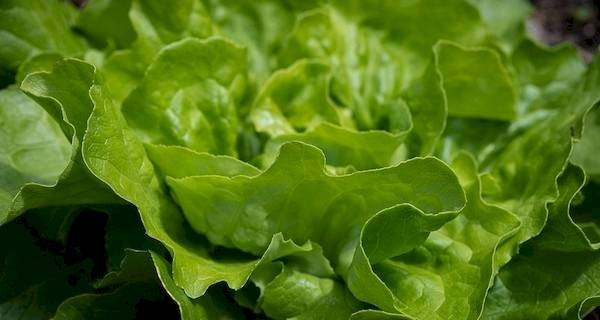
As mentioned earlier, lettuce is ideal for growing in a deeper water culture system and is, therefore, a great plant for those beginning their journey in hydroponics. This popular vegetable, often consumed as part of a salad, is relatively easy to grow. It will probably take just three to four weeks for lettuce to germinate hydroponically. However, leafy forms of lettuce tend to grow twice as fast as head lettuce like iceberg lettuce. Lettuce should be grown with a pH level of between 6.0 and 7.0. Among the types of lettuce that you could grow are butter crunch, Boston, bibb and romaine.
Spinach
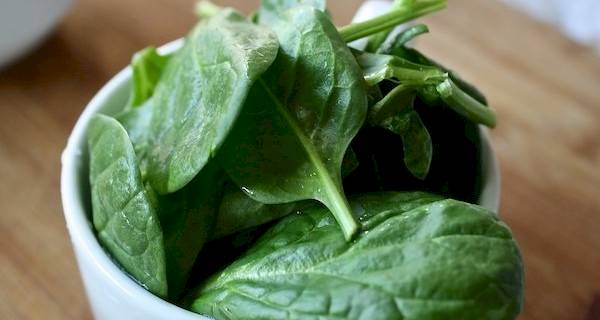
Another vegetable, spinach is also a good beginner's vegetable when it comes to hydroponics. It is also well suited to deep water culture, wick and ebb and flow systems. It may take as little as one week or up to three weeks for spinach to sprout hydroponically. It should have a pH level between 5.5 and 6.5. The three key varieties of spinach are flat-leafed, savoy and semi-savoy.
Tomatoes
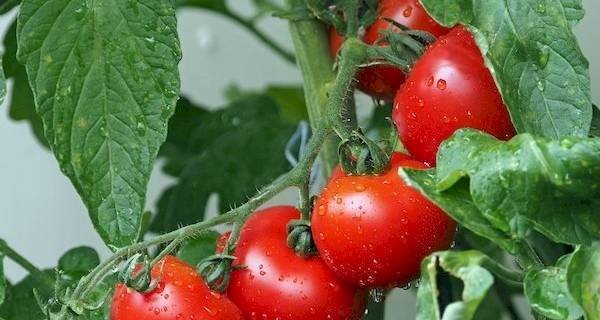
Moving on to fruit, tomatoes are also relatively straightforward to grow in a hydroponic environment. Since tomatoes grow well hydroponically and require one of the easier systems, they are also a good option for beginners. Tomatoes should germinate within just 5-10 days in a hydroponic system, but it will take about one to two months before the fruit will appear and mature. The best pH level for hydroponic tomatoes is 6.0 to 6.5. Among the popular varieties of tomato are cherry tomatoes, mini plum tomatoes, orange-yellow cherry tomatoes and plum tomatoes ripe on the vine.
Basil
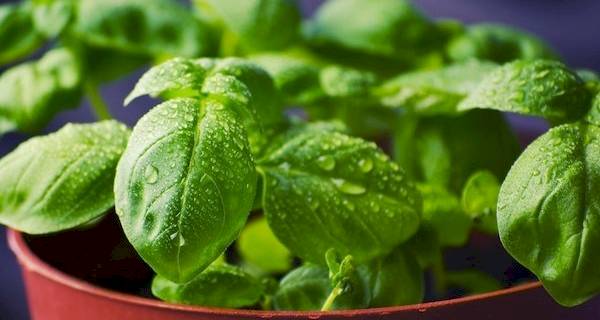
This popular culinary herb is another easy to grow plant as it too works well with some of the easier hydroponic systems. The crop time of basil is approximately four weeks, and it should have a pH of between 5.5 and 6.5 and the types of basil which you can grow include classic sweet basil, Thai basil, dwarf basil and Genovese basil.
Swiss Chard
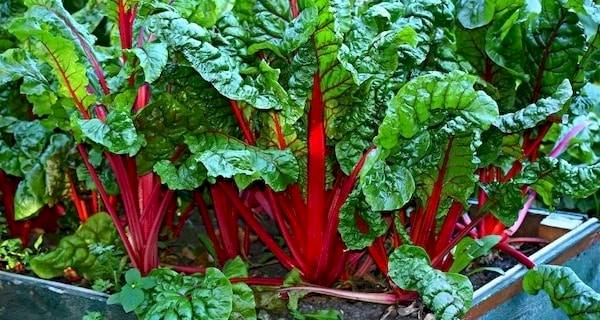
This green leafy vegetable is closely related to beetroot and can also be grown in beginner level hydroponic systems. It will likely take one to two weeks for the seeds of Swiss chard to germinate in a hydroponic garden and in most cases, it'll be safe to harvest after about 35 days. Its ideal pH level is 6.0 to 6.5. Among the most popular varieties of Swiss chard are Magenta Sunset, Ruby Red, Bright Yellow and Bright Lights.
Cucumbers
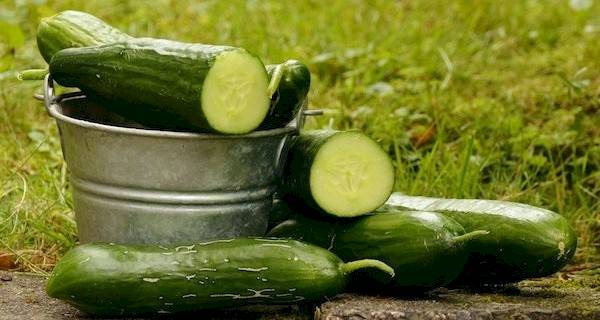
This well-known creeping vine plant is in fact a fruit and contains plenty of beneficial nutrients. With the likes of ebb and flow and deep water culture systems being best suited to cucumbers, they are another great way to get your hydroponic journey underway. You can first harvest hydroponically-grown cucumbers after about four to six weeks and their ideal pH level is 5.5. The best varieties of cucumber to grow in a hydroponic garden are bitter-free, spineless, gynoecious and burpless cucumbers.
How Much Will It Cost to Start Hydroponic Farming?
Let's now delve into the average cost of setting up a hydroponic farm. It's possible to construct a hydroponic system for around £100 or less although many high-quality systems will cost at least several hundred pounds to create. For a high-quality greenhouse hydroponic farm, expect to pay several thousand pounds in total for its installation. Once you've set one up, the running costs will vary depending on the scale of the operation. Such expenses can include electricity, nutrient solution (although a system that recycles its solution well will have a much lower nutrient cost) and any other chemical treatments or products that are needed to maintain the system and its plants. Over time, maintenance and repairs will also be needed.
Cost of Creating a Hydroponic System
The following list of key equipment applies primarily to small beginner hydroponic systems. Costs would rise substantially for larger operations.
Key Equipment
| Equipment | Average Cost |
| Cultivation Light | £40 to £130 |
| Cultivation Insert Kit | £2 to £5 |
| Home Hydroponic Kit | £50 to £160 |
| Hydroponic Pump | £30 to £70 |
| Water Reservoir (Container) | £15 to £90 |
| Hydroponic Timer | £20 to £100 |
| pH Test Kit | £3 to £10 |
| pH Regulator | £5 to £15 per year |
Recurring Costs
| Resource | Average Cost |
| 3 litres of growing medium (small system) | £2 to £4 per year |
| 6 litres of growing medium (medium system) | £4 to £8 per year |
| 12-24 litres of growing medium (larger system) | £8 to £32 per year |
| 50 grow plugs (small system) | £2 to £4 per pear |
| 100 grow plugs (medium system) | £4 to £8 per year |
| 200-500 grow plugs or more (larger system) | £8 to £40 per year |
| 500ml fertiliser (small system) | £2 to £4 per year |
| 1 litre fertiliser (medium system) | £4 to £8 per year |
| 2-5 litre fertiliser or more (larger system) | £8 to £40 per year |
| 3 packets of seeds (small system) | £3 to £7 per year |
| 5-10 packets of seeds or more (larger system) | £7 to £12 per year |
| Cleaning Equipment | £5 to £10 per year |
Cost of Running a Hydroponic System
Light Costs
| Resource | Average Cost Per Hour |
| Incandescent Light Bulb | £0.018 |
| Halogen Light Bulb | £0.012 |
| Compact Fluorescent Light Bulb | £0.004 |
| LED Light Bulb | £0.003 |
Additional Energy Costs
Aside from the electricity cost of running lights, you'll also need to pay for the cost of powering pumps, a timer and any indoor heating and environmental regulation technology (e.g. dehumidifier). These costs can vary greatly depending on how big the operation is and to what extent such equipment is needed.
Conclusion
We hope that you found this article useful as you begin your hydroponics journey. Now, you have the knowledge and understanding to start planning out your very hydroponic system. We've looked at what hydroponics is, how it works, what advantages this approach to plant growing has, the types of hydroponic systems and the sort of plants that you can grow hydroponically. We also broke down the various costs of launching and running a hydroponic garden. For further information, consider purchasing a hydroponic book or manual.
If you intend to build a hydroponic system in the near future, it's now time to start making decisions as you plan out the space. Would you like to buy one of the many hydroponic kits on the market or undertake D.I.Y. hydroponics, constructing a system entirely from scratch? Do you want a deep water culture system, wick system or another type of hydroponic system? Those are the sort of questions you'll need to answer before making any purchases. However, once you have and you have a clearer vision in mind, you'll be able to go about bringing your own hydroponic space to life. Make sure to do your research, plan things out carefully and best of luck!
Sources
https://www.explainthatstuff.com/hydroponics.html
https://medium.com/@joehoward_90148/hydroponics-in-the-21st-century-1e4c3367e664
https://www.epicgardening.com/history-of-hydroponics
https://trees.com/history-of-hydroponics
https://www.freshwatersystems.com/blogs/blog/what-are-hydroponic-systems
https://www.hydroponics.net/learn/hydroponic_gardening_for_beginners.php
https://greenourplanet.org/benefits-of-hydroponics/
https://thehydroponicsstore.com/grow-blog/commonly-found-pests-and-diseases-in-hydro-plants/
https://www.advancednutrients.com/articles/easy-hydroponics-beginners-guide/
https://lsncrun.info/hydroponic-tips-for-best-hydroponics-equipment/
https://homeguides.sfgate.com/quick-growing-plants-hydroponic-systems-27438.html
https://www.gardenersworld.com/plants/five-sweetest-tomato-varieties/
https://www.gtghydroponics.com/faq/herbph.aspx
https://www.johnnyseeds.com/growers-library/herbs/hydroponic-container-basil-guide.html
https://gardeningtips.in/growing-swiss-chard-hydroponically-a-full-guide
https://www.cropking.com/blog/hobby-greenhouse-product
https://www.less-waste.co.uk/hydroponics-unit-running-cost/
https://www.growell.co.uk/advice/hints-tips/grow-lights-which-one-really-costs-less
Last updated by MyJobQuote on 14th October 2020.
